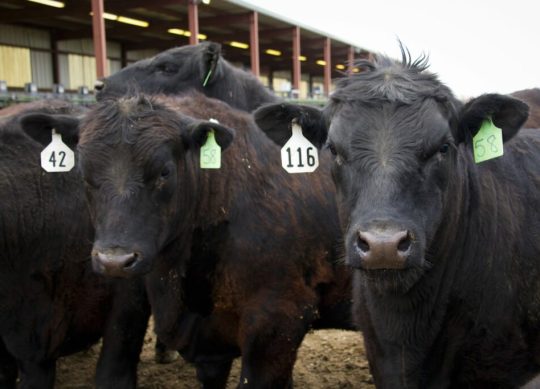Is Beef Breeding Derailing the U.S. Dairy Industry?
Beef-on-dairy breeding has revolutionized the U.S. cattle industry, shored up dwindling fed-beef cattle supplies, and added considerable black ink to the bottom lines of dairies in recent years.
But is it a phenomenon gone too far? Regardless of industry, mega-trends can carry with them unintended consequences. Veteran dairy data expert and thought leader Steve Eicker, DVM, fears the lure of lucrative near-term cash-outs on beef-cross calves may be altering the course of the U.S. dairy business to damaging degrees.
Eicker, co-founder of Valley Agricultural Software and its popular Dairy Comp 305 herd management software, acknowledged that beef-cross calves have plugged many holes in the nation’s beef animal supply. At just over 28 million head, the U.S. beef cow herd size is at a 70-plus-year low.
Feedlots have welcomed beef-cross calves to keep their pens full, and at premium prices to boot. This past summer, newborn beef cross calves sold for as high as $1,000/head or more, with $600-800/head the norm.
But at what true cost to the dairy industry? Eicker believes the chinks in the armor are beginning to show and will become more apparent in the months and years ahead. The factors that are being affected include:
- Heifers are in short supply – Creating more beef-cross calves has resulted in less opportunity to produce dairy heifer calves. In just two years, from the start of 2022 to 2024, the total number of replacement dairy heifers in the U.S. has dropped more than 10%, part of a 7-consecutive-year decline in the nation’s heifer inventory. At slightly over 4 million dairy heifers, the national supply is at a 20-year low. What’s more, just 2.59 million heifers are projected to calve and enter the nation’s lactating herd this year — by far the lowest inventory in 22 years of USDA projections. Commensurately, heifer prices have climbed precipitously through 2024 as dairies scramble to secure them.
- Removals have slowed – Marketing dairy cows for beef has also hit record-low territory. Because dairies are having a hard time finding enough heifers to keep their stalls filled, they are hanging onto cows longer. In the week ending July 6, 2024, just 40,189 dairy cows were slaughtered nationwide, the lowest total in any week since Christmas 2009, and more than 20% lower than the same week in 2023. By August 17, only 1.74 million head of dairy cows were sold for beef this year, compared to 2.04 million head in the same time period last year. Eicker said the detrimental effects of this data are three-fold. First, dairies give up the potential of introducing the most current genetics into the herd that heifers deliver. Second, “those cows that are removed are in far worse condition, and thus bring less income at salvage,” noted Eicker. Consequently, the beef supply is also shorted by those lighter cows that are in worse condition. Third, he is concerned that delaying the removal of market cows will negatively impact their condition and welfare.
- Milk production is down – “U.S. milk production is dropping because we have far too many low- producing cows that we cannot replace,” declared Eicker. Again, the numbers tell the story. Total milk production has flatlined at just over 225 billion pounds annually since 2021, after growing incrementally each year since 2014. In the most recent USDA Milk Production Report, average milk production per cow dropped 13 pounds/head for April-June 2024 compared to the same window in 2023, and total milk production for the quarter was down 624 million pounds year-over-year.
Eicker said the beef-on-dairy movement may prove to support the old adage of, “if it seems too good to be true, it probably is.” And he is fearful that the current inventory situation will prevent dairies from maximizing their ability to capitalize on currently rising milk prices, because they simply will not have the animals to do it.
“That short-term increase in calf revenue is dwarfed by the fact that they will be forced to keep their market cows many months longer,” he noted. Plus, with rising heifer values, there is real money to be made again raising and selling heifers. “What dairy would want $600 now instead of $1,600 in two years?”
Dairy Herd Management, SEPTEMBER 2024



